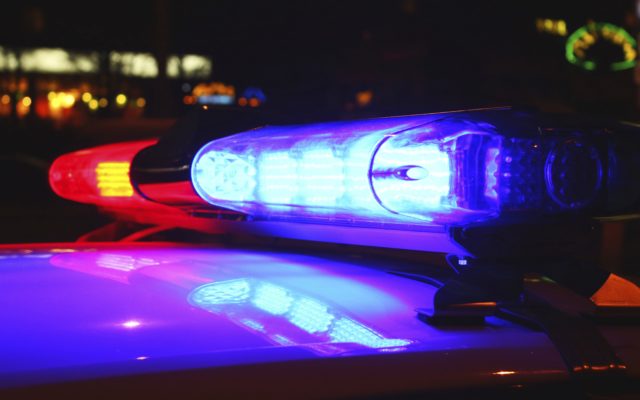Crews find Navy ship unseen by human eyes for nearly 8 decades

▶ Watch Video: USS Johnston uncovered after nearly 80 years
Operating a submersible with an unlimited diving depth, Victor Vescovo found the wreckage of the USS Johnston, a United States Navy destroyer that sunk in what historians consider to have been the largest naval confrontation in world history.
The Johnston was involved in the Battle of Leyte Gulf, a four-day battle in 1944 that is considered a turning point in World War II. Over 200,000 naval personnel fought in the battle.
The United States Navy lost seven ships, including the USS Johnston, which had been unseen by human eyes for nearly eight decades. It is the deepest wreck ever discovered — much deeper than the Titanic.
“We kept going deeper and deeper and deeper into the black and then out of the murk we could just slowly see the bow,” Vescovo told CBS News’ David Martin.
“What was that moment like?” Martin asked.
“Oh my goodness…The guns of the ship were still pointed in the proper direction of where they were firing when they went down. The ship still looked like it was still fighting, like it still hadn’t given up,” Vescovo replied.
The entire crew of the USS Johnston either went down with the ship or scrambled off just before it sank. 186 sailors died. “All of those in the battle who were lost, the remains were never located,” Warren Sterling said.
Sterling’s uncle Elton was the Johnston’s executive officer and one of those who perished, although it is not known exactly how he died.
“They were in the water for 52 hours before being picked up,” he said. “Seems like he swam off and either he drowned or a shark got him.”
The wreckage will remain untouched, but its discovery has brought to the surface the astonishing story of the USS Johnston. Retired admiral Samuel Cox, director of the Naval History Command, has known of the USS Johnston for years.
“I was into naval history before I could read, looking at pictures in my dad’s books, so I knew the story of Ernest Evans, the commander of the Johnston. He was a childhood hero of mine,” he said.
Cox said Evans was the first Native American to be awarded a Medal of Honor in the United States Navy.
General Douglas Macarthur had just waded ashore in the Philippines as the U.S. closed in on Japan, and the Johnston was part of a naval force protecting MacArthur’s supply ships.
“On the morning of 25 October 1944, that force was surprised by a vastly superior Japanese force that was able to get through a strait undetected during the night and show up unexpected,” Cox said.
“It was four battleships, eight cruisers and 11 destroyers. And without waiting for orders he turned and took his ship and charged that entire Japanese force and was able to put a torpedo in the lead Japanese cruiser,” he continued.
“That sounds like a suicide charge,” Martin said.
“If he didn’t do something, the Japanese were going to overrun and sink the entire force. Then they’re into General MacArthur’s supply ships and troop transports,” Cox replied.
For a few desperate hours off the Philippine island of Samar, Evans and his ship were in the Japanese bulls-eye. The Japanese guns were too big and too many.
“Johnston is dead in the water and crippled, and these Japanese destroyers are just firing round after round after round into the ship. And finally, Johnston sinks and one of the Japanese commanding officers was observed to actually saluted the U.S. ship as it went down,” Cox said.
“What happened to Evans?” Martin asked.
“Evans was last seen going into the water as the ship sank and then never seen again,” Cox said.
“How does the battle end?” Martin asked.
“The Japanese commander turns away. He’s on a do-or-die mission, yet he turned back,” Cox said.
The Johnston is a burial ground as sacred as Arlington National Cemetery. Before Vescovo left, he threw a wreath into the water as a final tribute to commander Ernest Evans and the men who followed him into battle.



